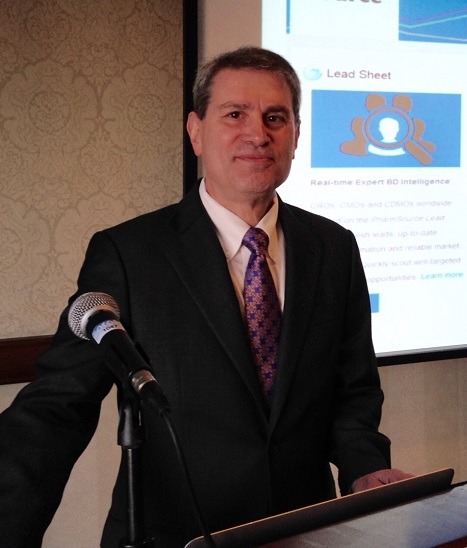CDMO Market Forces Re-shape of M&A Activity
The emergence of mega-contract development and manufacturing organizations (CDMOs), limited acquisition targets of CDMOs due to tight capacity, and burgeoning trade issues are key issues influencing deal-making in the CDMO market.
Mergers and acquisitions (M&A) have played a pivotal role in the evolution of the contract development and manufacturing (CDMO) industry. However, after an especially active year in 2017 when 12 strategically and financially significant acquisitions were completed, the number of deals has dropped off sharply, with just five in 2018 and only two thus far in 2019.
The decline in significant deals reflects a variety of factors, including a shrinking pool of attractive acquisition candidates and the high multiples demanded by sellers. These factors could limit M&A activity in the near future, but other factors are emerging that will shape acquisition activity as well. These include the emergence of “mega-CDMOs,” lack of capacity, and uncertainty in the macro environment.
 |
|
Jim Miller |
Emergence of mega-CDMOs
While the CDMO industry remains fragmented, we have seen the emergence of “mega-CDMOs,” contract service providers generating $3 billion to $5 billion in revenues with the manufacturing scale, capabilities, and expertise to match all but the very largest biopharma companies. There are now at least four such companies, each offering a broad array of manufacturing and development capabilities and scale on the level of a $20-billion biopharma company: Catalent, Lonza, Thermo Fisher Scientific/Patheon, and WuXi AppTec.
For these broad-based mega-CDMOs, the significance and drivers of M&A activity have changed. Most have achieved their positions through very expensive transformational acquisitions, but now that that they have attained revenues of $3 billion to $5 billion, the typical acquisition target available in the CDMO industry hardly “moves the needle” in terms of their revenue or profitability. Consider the recent very expensive acquisitions of CDMOs providing cell and gene therapy development and manufacturing services: Thermo Fisher’s $1.7-billion acquisition of Brammar Bio and Catalent’s $1.2-billion acquisition of Paragon Bioservices, two deals completed in May (2019). Despite the large valuations of those deals, they only added about 5% to the acquiring company’s revenues, but the strategic significance of participating in the fast-growing cell and gene therapy space made it imperative that Thermo Fisher and Catalent pay up to enter that market.
The high-priced acquisitions of CDMOs providing cell and gene therapy development and manufacturing services spotlight a major consequence of the emergence of mega-CDMOs: an outbreak of intense rivalry among the market leaders. Rivalries among market leaders are common in industries and market segments where a few companies dominate: think of BMW versus Mercedes versus Lexus in luxury autos or Boeing versus Airbus in commercial aircraft. These rivalries develop because the competitors are targeting the same or similar customer segments with value propositions that are the same or only slightly different: all luxury car makers are selling performance and status while competition between Boeing and Airbus focuses on operating costs.
Executives of industry leaders often perceive a need to match their rivals capability-for-capability. In part that reflects the need to combat Wall Street perceptions that they might be falling behind competitors when they don’t match their strategic moves. In the CDMO business, the stakes for matching capabilities are especially high and real because a given capability is often the entry point to a broad relationship encompassing the full palette of the CDMOs offerings: clinical supplies services can lead to a commercial manufacturing contract and an active pharmaceutical ingredient (API) manufacturing client can be convinced to have the drug product manufactured by the same supplier. A CDMO that lacks a critical piece can lose out on the whole supply chain. A perpetual game of leapfrog and catch-up will get played out in this environment.
One can see how rivalry may well have been a factor in the Thermo Fisher–Brammar and Catalent–Paragon deals. Not only do the two companies compete fiercely with each other, but the other two mega-CDMOs, Lonza and WuXi AppTec, already have well-established presences in the cell and gene therapy market. Cell and gene therapy has emerged as a rapidly growing market segment that has captured the attention of investors, biopharma companies, and Wall Street analysts, and without their respective acquisitions, Thermo Fisher/Patheon and Catalent may have had to stand by while other rivals had the field to themselves. While Thermo Fisher and Catalent had legitimate strategic growth reasons to do those deals, the need to catch up to major rivalries may have played a part in their decisions.
Intense competition among rivals can drive up multiples for strategic acquisitions as they outbid each other for prized targets, for example, an API or drug product manufacturer with substantial revenues and a pristine reputation. There are few such targets left, so if one comes to market, the bidding is likely to be intense.
Need for capacity
CDMOs continue to benefit from an extremely strong market environment. Emerging biopharma companies raised record levels of funds in 2017 and 2018 and are endowed with ample cash to fund their pipelines. According to the Biotechnology Innovation Organization (BIO), emerging biopharma companies in the US raised $12.3 billion of venture capital in 2018, double what they raised in 2016; and $5.2 billion in initial public offerings (IPOs), nearly five times what was raised in 2016 (Source: BIO, 2019 Emerging Therapeutic Company Trend Report, May 2019). Furthermore, the financial markets’ love affair with biopharma has continued into 2019, with 22 companies having raised $2 billion through the end of May.
Most of the development spending by emerging biopharma companies is funneled through CDMOs. While financial reporting from CDMOs is limited, results of their clinical and preclinical contract services cousins indicate that the market is quite robust, with first-quarter revenue growth rates typically in the high single digits (7-10%) or even double-digits (up to 25%).
To respond to these robust growth opportunities, CDMOs need capacity, and M&A has traditionally been a favored avenue for getting it. Buying companies rather than building capacity has multiple advantages, including immediate market entry or incremental capacity, an established book of business and customer base, and an established work force. There is an expectation that revenue can be built quickly via the acquirer’s sales force, and that some cost savings can be realized through integration of overhead operations.
However, capacity-driven acquisitions of CDMOs are almost unheard of these days because with demand so robust, most CDMOs have little spare capacity available. CDMOs seeking capacity must look to facilities being shed by biopharma companies that no longer need the in-house capacity. The most significant of these deals announced in 2019 to date have been Thermo Fisher’s/Patheon’s EUR 90 million ($100.6 million) acquisition of a GlaxoSmithKline small-molecule API facility in Ireland and Biogen’s sale of its large-molecule facility in Denmark to Fujifilm Diosynth Biotechnologies for $890 million.
While manufacturing facility acquisitions add needed production capacity, that opportunity generally isn’t available for development capacity. Biopharma companies generally aren’t selling entire development facilities and development capacity is constrained more by the availability of skilled and experienced professionals than it is by equipment. Even large CDMOs are willing to consider very small acquisitions out of desperation to gain needed development capacity.
Macroeconomic uncertainty
The broader economic environment in which the biopharma industry operates is becoming very uncertain. Anti-trade sentiments and policies are dangerous for an industry whose supply chains are very global. The threat does not come just from tariffs, but regulatory policies that encourage local production and use non-tariff barriers, such as product marketing authorizations and regulatory compliance inspections.
A big concern comes from the fact that the United States is the largest biopharma market and is instigating many of these anti-trade measures. China, Mexico, India and the European Union have all been in the US crosshairs of late. All are important links in the biopharma supply chain because of their low local production costs or favorable tax policies.
Pharmaceuticals get favorable status in many current free trade agreements, but if anti-trade policies are targeted at biopharma companies, they may be forced to redesign supply chains built in a free-trade environment and reconsider where their products are made. Rather than building global centers of excellence or large-scale facilities meant to supply global markets, companies may be forced to re-localize manufacturing operations.
The rejiggering of supply chains could cut both ways for CDMOs. The re-localization of manufacturing could benefit CDMOs, whose multi-product facilities would offer biopharma companies an alternative to building networks of sub-scale captive facilities. On the other hand, CDMO businesses built on leveraging the cost advantages of offshore operations could find themselves disadvantaged by the offshore networks.
This uncertain environment raises important questions that complicate decisions regarding what assets should be bought and where they are located. What are the risks of acquiring a facility in Europe or India or China if the facility is meant to serve more than just local markets? Will the financial return of an acquisition change significantly if the terms of trade are altered? Questions such as these could impact the M&A deal flow going forward.






